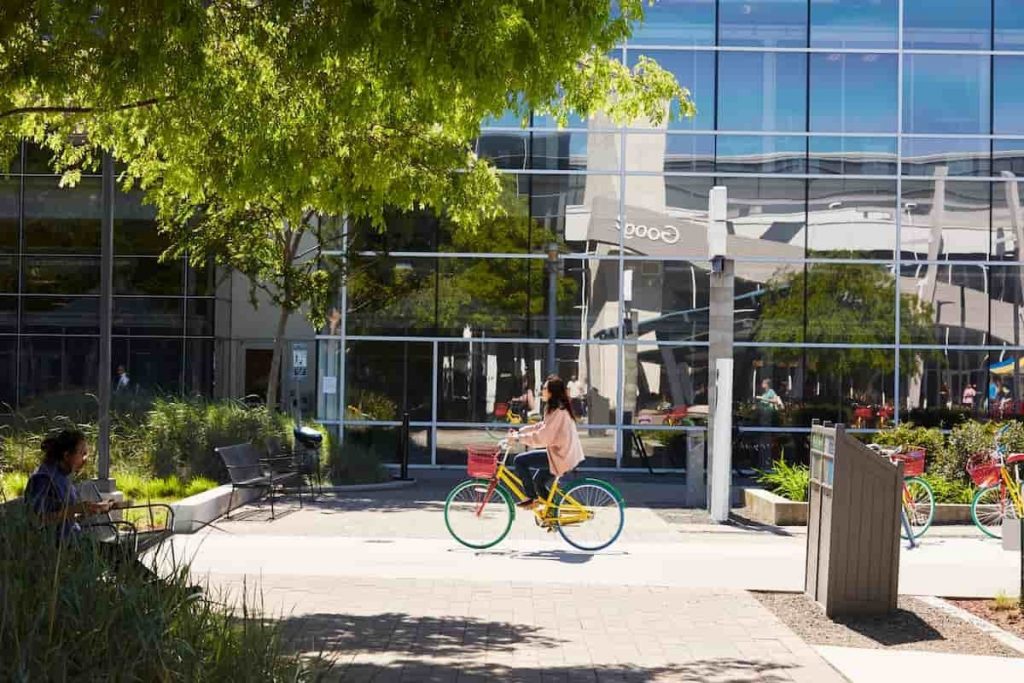For over two decades, Google’s products have enhanced people’s lives globally. Since its launch in 1998, the company has strived to operate in an environmentally and socially responsible manner. All its endeavors are highlighted in an official August 3 blog post by Ruth Porat, Alphabet, and Google CFO.
In that context, Google has remained carbon neutral since 2007 matching its whole electricity consumption rate with renewables for the last three years. The company invests heavily in affordable housing while simultaneously committing to promote racial equity.
As part of Google’s $10 billion debt offering, $5.75 billion was set aside for sustainability bonds. That represents the biggest sustainability or green bond by any company ever. The proceeds from these bonds will support investment in social and environmental initiatives.
Sustainability bonds are an emerging asset class and Google hopes that its transaction will help grow the budding market. There was strong demand for these bonds and they were considerably oversubscribed.
Continuing and new environmentally or socially responsible projects will benefit from these sustainability bonds. These investments benefit communities, stakeholders, and employees. Moreover, they are an integral part of fulfilling Google’s goal and mission of developing long-term value.
Companies eligible for the use of proceeds from sustainability bonds come from eight categories. They operate consistently within the Social Bond Principles and Green Bond Principles. The companies build on significant investments previously made by Google and will not get an allocation to any Google.org activities.
Clean and efficient operations
Google data centers rank among the most efficient globally. For over ten years, the company has strived to optimize its use of water, energy, and materials. Currently, a Google data center is twice as energy efficient as a normal enterprise data center.
In the past five years, the company has managed to increase the amount of computing power seven times while using the same amount of electricity.
Combating climate change calls for an efficient transition to the clean energy economy. Ruth Porat, Alphabet, and Google CFO commented:
“To date, we have committed approximately $4 billion to purchase clean energy from more than 50 wind and solar projects globally through 2034. Next, we are focused on our longer-term vision to source carbon-free energy for our operations 24 hours a day, seven days a week; this means matching our energy consumption with clean energy for each of our data centers around the world on an hour-by-hour basis.”
Since the start, Google has focused on the impact that its workplaces have on the environment. Now, over 13 million square feet of its offices are LEED-certified. No food is wasted from their cafes.
The company is also promoting the use of EVs and bicycles to reduce carbon emissions. It has saved 40,000+ metric tons of CO2 emissions by using shuttles in the Bay Area.
Google operates on a circular economy design. It maximizes the reuse of finite resources across its products, operations, and supply chains. Porat added:
“To date, we’ve shipped millions of devices made with post-consumer recycled plastic and 100% of Nest products launched in 2019 include recycled plastics.”
This strategy has enabled Google to reduce its waste emission significantly.
Community empowerment
Google strives to improve and empower the people living in places where they have offices. The company made a $1 billion commitment to invest in housing in the Bay Area. The initiative will help build 20,000 residential units with 5,000 of them being quite affordable.
Since racial equity highly links to economic opportunities, Google is also dedicated to continuing to support Black businesses.
Recently, it launched a $175+ million economic opportunity initiative that will help in funding small businesses in Black communities. Also, it has set up a $100 million YouTube fund to help amplify Black creators and artists.
In the current COVID-19 times, Google made an $800+ million commitment to support small- and medium-sized businesses, governments, health organizations, and health workers on the frontlines.
It has also partnered with the Opportunity Finance Network (OFN). The partnership will help provide low-interest loans to support the community development financial institutions that give loans to small businesses operating in underserved communities in the United States.
Google is also working with the American Library Association to assist in the creation of entrepreneurship centers throughout the US.
The Sustainability Bond Framework will guide all these investments. For transparency and alignment purposes, Google plans to report back annually on all the funded projects and their expected impact.
Thus, the sustainability bonds are the next chapter in the company’s commitment to creating a sustainable future for everyone.









